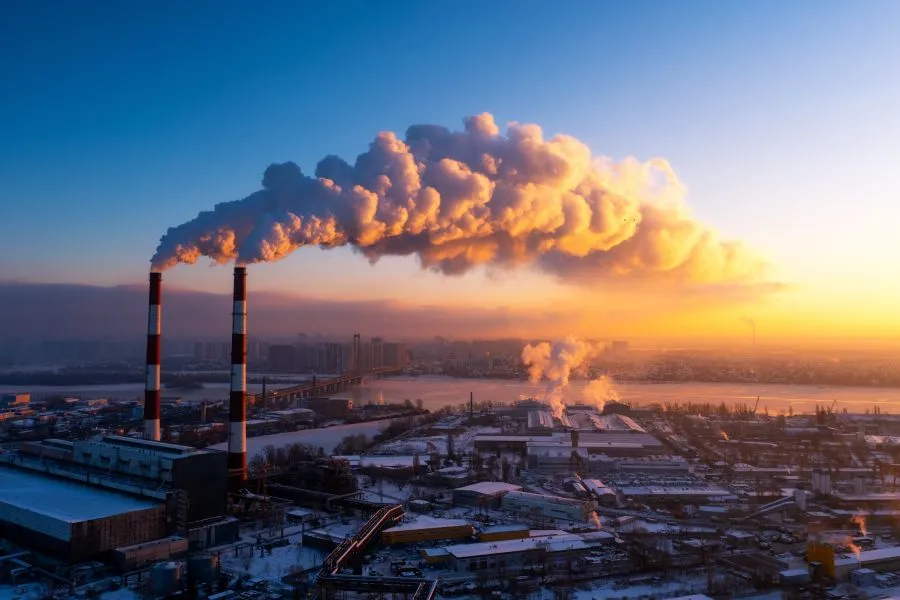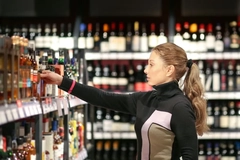
- Industry news
Industry news
- Category news
- Reports
- Key trends
- Multimedia
Multimedia
- Journal
- Events
- Suppliers
Suppliers
- Home
- Industry news
Industry news
- Category news
- Reports
- Key trends
- Multimedia
Multimedia
- Events
- Suppliers
Suppliers
EU ETS reforms: Industry concerns over costs, competitiveness & carbon leakage
Key takeaways
- European industries, including packaging and chemicals, argue that the EU Emissions Trading System’s current pace risks driving production abroad.
- The joint position paper by energy-intensive industries calls for realistic decarbonization timelines.
- Watchdog group Carbon Market Watch warns against diluting the ETS, emphasizing its importance for meeting climate goals.

The EU Emissions Trading System (EU ETS) aims to reduce member countries’ joint CO2 emissions by 55% by 2030 through the “polluter pays” principle, and reach climate neutrality by 2050. A joint position paper by industries, dubbed by the European Commission (EC) as “energy-intensitive” (EIIs), has outlined how the new rules would disadvantage EU businesses, including packaging manufacturers, and favor markets with less stringent environmental legislations.
Some of the EII EU trade organizations behind the EIIs paper include the European Chemical Industry Council (Cefic), Cepi (the European association representing the paper industry), Eurofer (a steel association), and the Glass Alliance Europe.
“Packaging producers rely on a wide range of products from the chemical industry as well as other products from EIIs in their business operations,” a spokesperson for Cefic tells Packaging Insights.
The EU ETS places caps on companies’ CO2 emissions, expressed as emission allowances, which may be traded and sold. EIIs suppliers of chemicals and materials are required to monitor and report their emissions annually. According to the EC, it imposes “heavy fines” if its requirements are not met.
“If the decline in ETS allowances happens too rapidly, without having the enabling conditions in place to invest in low-carbon production processes, companies will face additional constraints,” the Cefic spokesperson adds.
They argue that this challenge will be amplified in a scenario of increasing EU carbon prices and energy costs that are higher than in competing economies. “This results in a more expensive intermediate or finished product on the market, which is then used in the packaging production process.”
Competitiveness and decarbonization balance
The EIIs position paper urges the EU to revise the ETS post-2030 to ensure “continued industrial competitiveness and realistic decarbonization pathways.”
.webp) The industry experts recommend more stringent protection of EU businesses against carbon leakage.The industry experts recommend more stringent protection of EU businesses against carbon leakage. This should include shielding from “direct and indirect carbon costs, both for domestic sales and extra EU exports.” Conditional free allocation must be avoided and indirect cost compensation should remain, according to the paper.
The industry experts recommend more stringent protection of EU businesses against carbon leakage.The industry experts recommend more stringent protection of EU businesses against carbon leakage. This should include shielding from “direct and indirect carbon costs, both for domestic sales and extra EU exports.” Conditional free allocation must be avoided and indirect cost compensation should remain, according to the paper.
Carbon leakage can occur when a company moves production to a country with less stringent climate policies, leading to a potential increase in GHG emissions.
The Cefic spokesperson says: “If the packaging industry opts to purchase these products from producers outside the EU who do not face comparable carbon costs, this will lead to carbon leakage of EU production.”
The position paper calls for an adjusted decarbonization pace and “realistic benchmarks.” The industry representatives deem the current trajectory, aiming for a near-zero cap by 2040, as “unrealistic.” This is the case because it would mean that industry has to be carbon-neutral by that date or stop production.
The spokesperson adds: “ETS timelines should remain feasible so that industry has the time and resources to achieve this objective while also allowing for the use of carbon removal technologies to compensate for residual emissions.”
“EU climate ambitions must drive investment in Europe, in low-carbon solutions, rather than shift production to regions with less stringent commitments to reduce carbon emissions.”
The EIIs also ask for “drastically” reduced bureaucratic hurdles for decarbonisation projects and greater redirection of ETS revenues directly to support industrial decarbonization.
Regulatory pressure: Too much or not enough?
Cefic tells us that the EU chemical industry is “fully committed to achieving a successful climate transition.”
“Together with other EII sectors, we have asked to adapt the cap to what is realistically achievable by industry in the current framework.”
.webp) Independent watchdog Carbon Market Watch found that ETS is “essential” to meeting the EU’s current climate targets.A new study commissioned by the Carbon Market Watch (CMW), an independent watchdog focused on European carbon pricing and climate policy, has found that ETS is “essential” to meeting the EU’s current climate targets and has warned against “watering down” through the proposed implementations of international carbon credits or carbon removals.
Independent watchdog Carbon Market Watch found that ETS is “essential” to meeting the EU’s current climate targets.A new study commissioned by the Carbon Market Watch (CMW), an independent watchdog focused on European carbon pricing and climate policy, has found that ETS is “essential” to meeting the EU’s current climate targets and has warned against “watering down” through the proposed implementations of international carbon credits or carbon removals.
Sam Van den Plas, policy director at CMW, says: “The ETS has only recently reached a meaningful carbon price that, while not perfect, made the carbon market a more powerful climate tool. This latest research confirms that the ETS is well-equipped for its mission of reducing emissions for at least another decade.”
“Boosting ETS market liquidity can’t come at the cost of the climate. Reforms must build trust in the ETS and keep the EU on track for its 2040 and 2050 climate goals.”
The Cefic spokesperson adds: “Climate legislation is key, but it must be matched by enabling conditions to support the climate transition.”
“For the chemical industry, this means market-pull measures, such as measures that stimulate demand for low-carbon products and investment in infrastructure. For example, CO2 infrastructure and electrification.”











